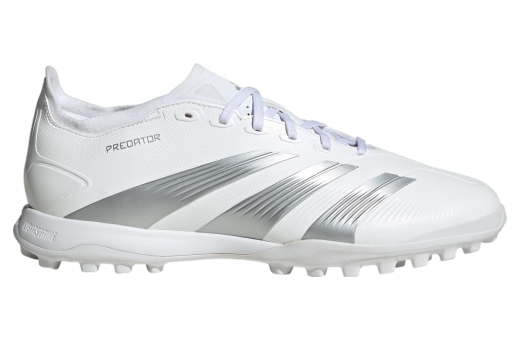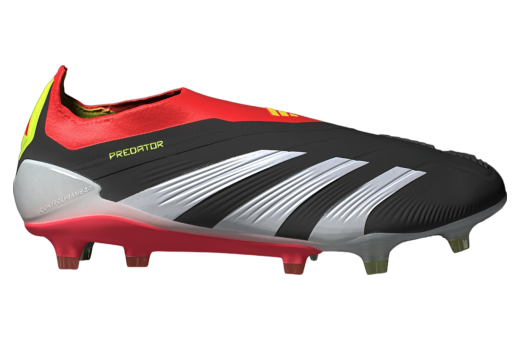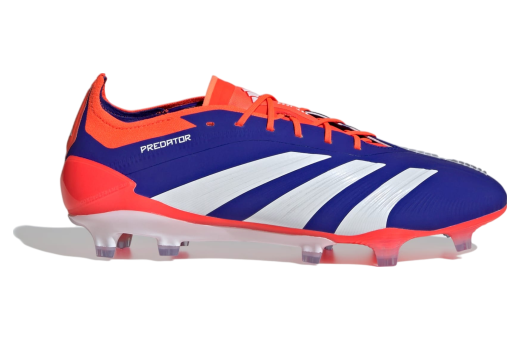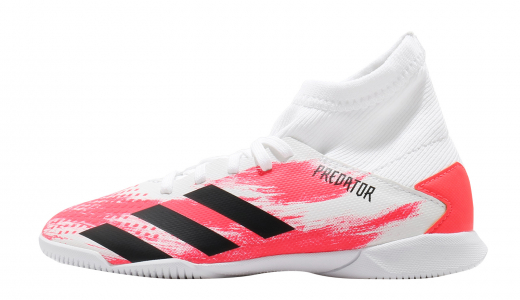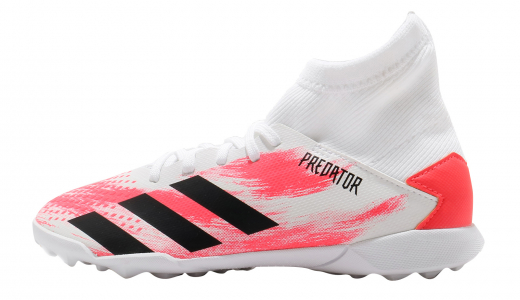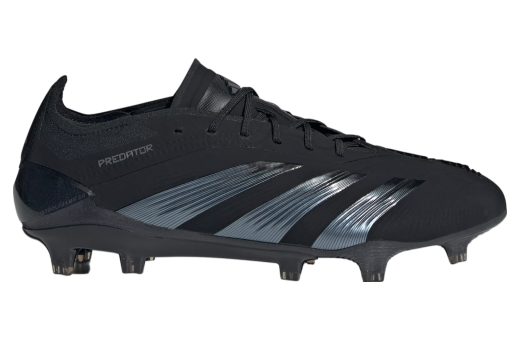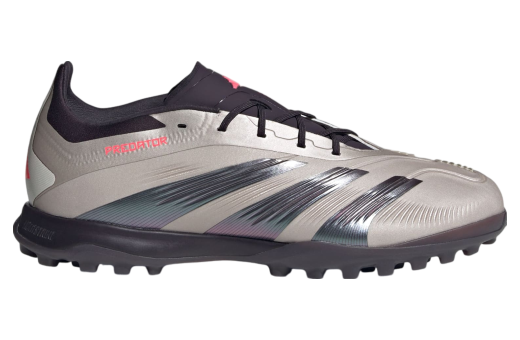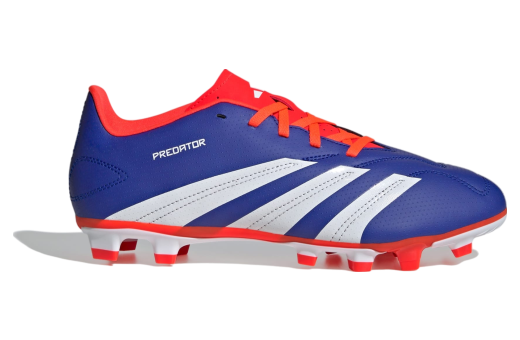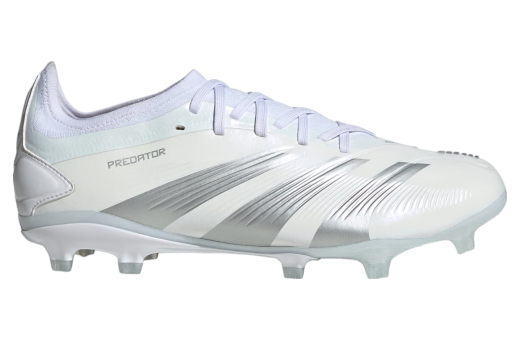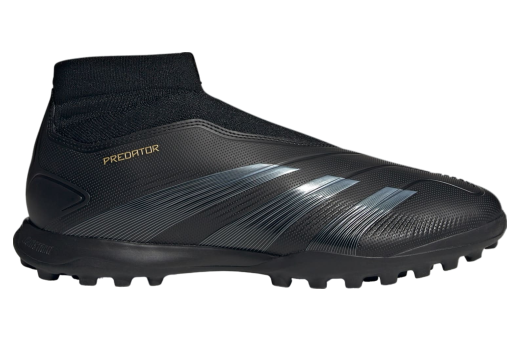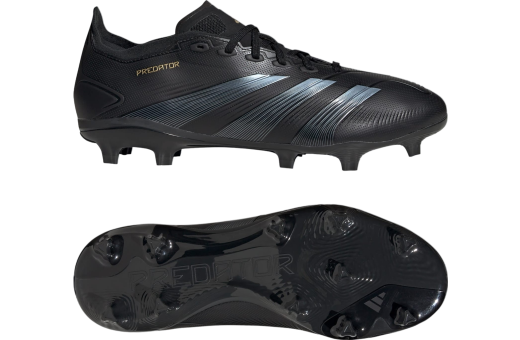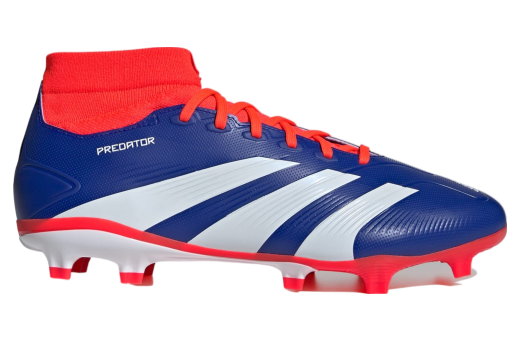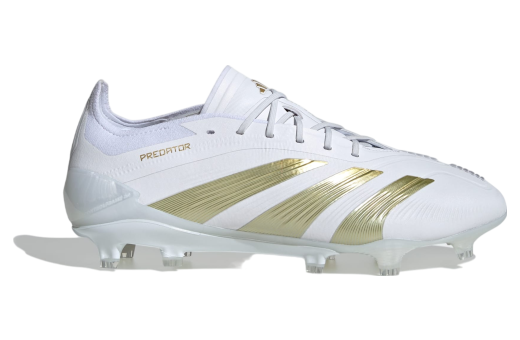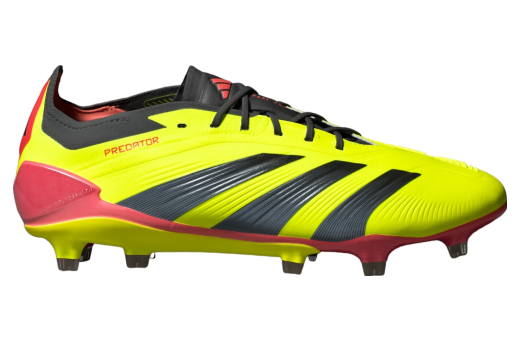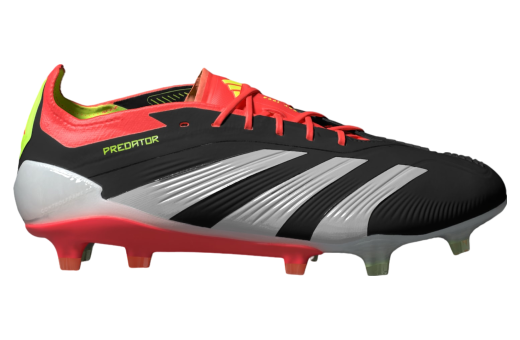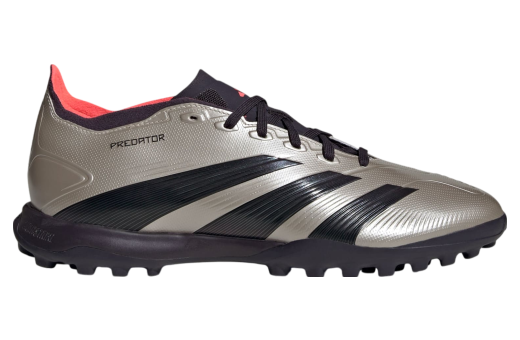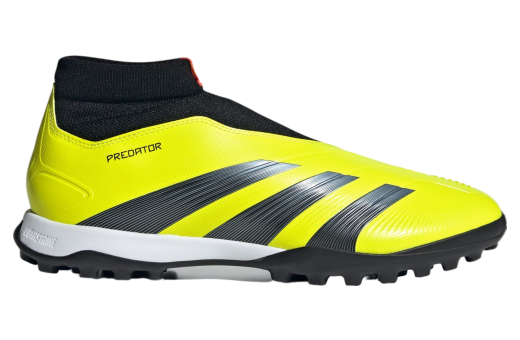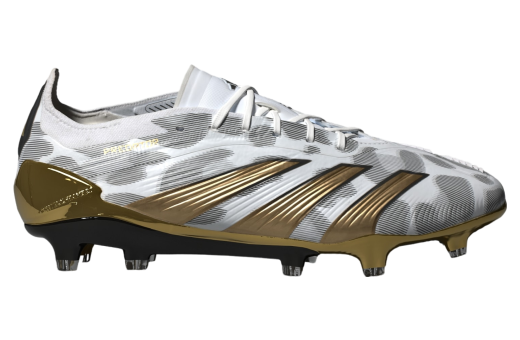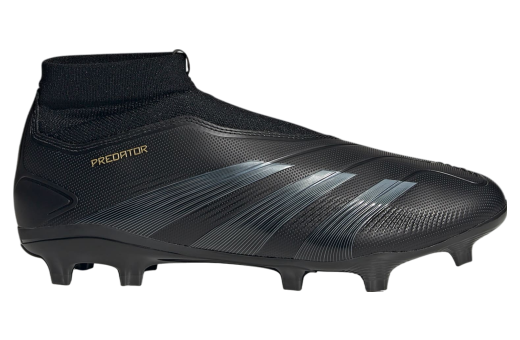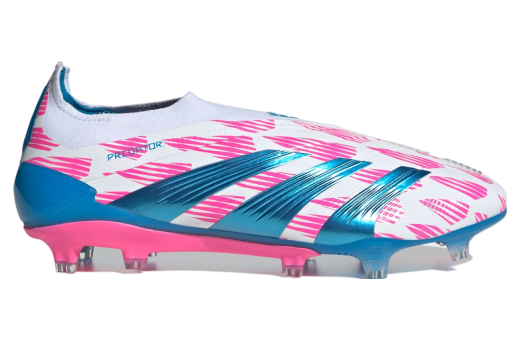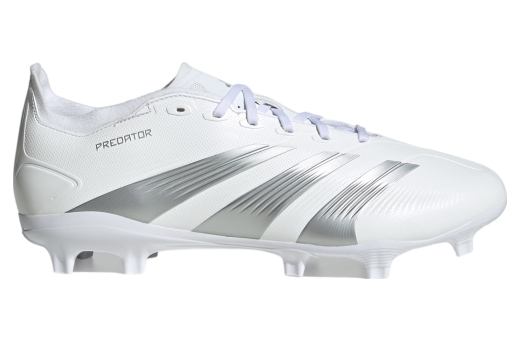Adidas Predator
The Adidas Predator is one of the most iconic and enduring lines of football boots in the world, known for its innovative design and game-changing technology. First introduced in 1994, the Predator quickly set itself apart from the competition with its rubberized striking zones on the upper, designed to increase swerve and power in a player's shot. Over the years, the boots have seen numerous iterations, each blending the latest in material science and engineering to enhance performance. The Predator's distinctive look, often characterized by bold color schemes and aggressive styling, has become synonymous with precision, control, and dominance on the pitch. Legendary players like Zinedine Zidane, David Beckham, and Steven Gerrard are among the many who have donned these boots, further cementing their status in football folklore.
The evolution of the Predator series reflects Adidas's commitment to pushing the boundaries of athletic footwear. From the introduction of the ControlFrame in the Predator 18 to the Demonskin technology in the Predator Mutator, each new model brings forward-thinking innovations aimed at giving players an edge. The Demonskin, for instance, features a 3D-printed spike configuration that enhances ball control and grip, allowing for more precise passes and powerful shots. More than just a piece of equipment, the Predator has become a symbol of the fusion between sports technology and human skill. Its enduring popularity is a testament to its impact on the game, consistently setting new standards for what a football boot can achieve. As the game of football continues to evolve, it's certain that the Adidas Predator will remain at the forefront, inspiring the next generation of players to reach new heights.
History of Adidas Predator
The History of the Adidas Predator
Since its introduction in 1994, the Adidas Predator has become an iconic symbol in the world of football (soccer) boots, known for its innovative design and high performance. It has transformed the ways players interact with the ball, thanks to its technological advancements and marketing prowess. This history delves into the origins, evolution, and cultural impact of the Predator, detailing its journey over nearly three decades.
Origins and Early Development (1994)
Conception
The idea behind the Adidas Predator originated with former Australian footballer Craig Johnston. Disillusioned with the football boots available, Johnston envisioned a boot that could offer better control and power. After retiring from professional football, Johnston dedicated himself to creating a prototype. He experimented with numerous designs that incorporated rubber patches for increased traction and spin on the ball. Johnston's relentless pursuit paid off, and he created the first prototype that he would eventually present to Adidas.Launch
Adidas saw the potential in Johnston's design and launched the Predator in 1994. The initial model featured rubber ridges on the forefoot, aiming to increase friction between the boot and the ball. This innovation promised more power and control for players. The launch coincided with the FIFA World Cup in the United States, offering a significant platform to advertise the new football boot.The debut model was embraced by numerous high-profile players, such as German international Stefan Effenberg and Italian goalkeeper Gianluca Pagliuca. This endorsement by top-tier athletes quickly made the Predator a popular choice among both professionals and amateur players.
Evolution Through The Years
Predator Rapier (1995)
Building on the success of the original Predator, Adidas released the Predator Rapier in 1995. This updated model refined the rubber fins and improved the overall fit. The Rapier was made of kangaroo leather, which was known for its softness and durability. The Rapier’s updated aesthetics and performance enhancements kept the Predator relevant and popular among footballers.Predator Touch (1996)
The Predator Touch, introduced in 1996, took things a step further by incorporating a fold-over tongue design. This feature had a dual purpose: it provided a cleaner striking surface and added an element of style that would become a signature of the Predator line. The blend of functional enhancements and trendy design solidified the Predator Touch as a hit.Predator Accelerator (1998)
The Predator Accelerator, released ahead of the 1998 World Cup in France, was another significant milestone. This model increased the area covered by rubber elements to offer even more ball control. The Accelerator also marked a shift toward more aggressive aesthetics, with its bold stripes and contrasting colors. High-profile players like Zinedine Zidane and David Beckham sported the Accelerator, further boosting its popularity.Predator Precision (2000)
In 2000, Adidas launched the Predator Precision, featuring interchangeable studs for the first time. This innovation allowed players to customize their boots for different pitch conditions. The Predator Precision was also lighter and more streamlined, appealing to players who prioritized speed and agility.Predator Mania (2002)
The Predator Mania is often regarded as one of the most beloved models in the Predator lineage. Released ahead of the 2002 World Cup in South Korea and Japan, this model retained all the performance elements while offering a sleeker, more modern design. It became famous when David Beckham wore the iconic champagne-colored Predator Mania, scoring memorable goals that would forever be linked with this boot.Predator Pulse and Absolute (2004-2006)
The Predator Pulse, introduced in 2004, featured the innovative PowerPulse technology that shifted the boot's weight closer to the point of impact, improving shot power and accuracy. By 2006, the Predator Absolute came to market, blending all the previous innovations with new materials and aesthetic updates. This model was worn by key players during the 2006 World Cup, maintaining the Predator's presence on football's biggest stage.Predator PowerSwerve (2007-2009)
In 2007, Adidas launched the Predator PowerSwerve, advancing the concept of power and control. This model incorporated SmartFoam technology to enhance energy transfer, thereby boosting shot power. The PowerSwerve was lauded for its precision and control, becoming yet another hit in the Predator lineup.Predator X (2009-2011)
The Predator X, released in 2009, marked a decade and a half of innovation. This model primarily focused on optimizing shot power and control. It featured a new material called Taurus leather, which combined the softness of kangaroo leather with improved durability. The Predator X also introduced the OptiFit system for better fit and comfort.Predator LZ and Instinct (2012-2014)
In 2012, Adidas launched the Predator Lethal Zones (LZ), which had five specialized zones designed for optimized ball control, dribbling, passing, shooting, and first touch. This model was part of a broader trend towards multifunctional boots. In 2014, the Predator Instinct came out to mark the Predator's 20th anniversary. The Instinct incorporated enhanced rubber elements and a refreshed design to continue the Predator legacy.The Era of Hiatus and Return (2015-2018)
Hiatus
Surprisingly, Adidas decided to discontinue the Predator line in 2015, favoring their newer Ace and X silos. The football community met this decision with surprise and disappointment, as the Predator had established itself as an iconic boot over two decades.Return: Predator 18 (2017)
After a brief hiatus, Adidas reignited the Predator legacy with the release of the Predator 18 in late 2017. This modern interpretation kept the Predator's spirit alive while integrating contemporary advancements. The Predator 18 featured a laceless design, Primeknit upper for adaptive support, and an enhanced control frame for stability. Its release marked a rejuvenation of interest in the Predator series.Modern Innovations (2019-Present)
Predator 19 and 20
Following the success of the Predator 18, the Predator 19 and 20 models continued to push the boundaries of football boot technology. The Predator 19 came with updates in the knit material for improved fit and control elements. The Predator 20 introduced "Demonskin," a series of rubber spikes across the upper designed to offer even more grip and spin on the ball.Predator Freak and Edge
In 2021, Adidas introduced the Predator Freak, which further improved the Demonskin technology by extending the rubber spikes' coverage. This model was celebrated for offering players enhanced control and precision. By 2022, the Predator Edge came to the market with a new ergonomic design focusing on weight reduction and agility.Sustainability Efforts
In recent years, Adidas has made strides towards sustainability, incorporating recycled materials into their products. The newer Predator models are part of this eco-friendly initiative, aligning the iconic boot with modern environmental consciousness.Cultural Impact
Sponsorships and Marketing
The Predator gained substantial notoriety through savvy marketing and celebrity endorsements. Iconic players like David Beckham, Zinedine Zidane, and Steven Gerrard not only wore the boots but also featured prominently in Adidas advertising campaigns. These endorsements helped the Predator gain a cult following.Media and Pop Culture
In addition to its impact on the pitch, the Predator has made appearances in media and pop culture. The Predator Mania, in particular, became a status symbol, often seen in music videos, movies, and even fashion runways. Its design elements have influenced streetwear and sneaker culture, making it more than just a football boot.Collectability
Avid football fans and boot collectors regard certain Predator models as highly collectible. Limited editions and legacy releases often fetch high prices in secondary markets. Adidas has also released reissues of classic models, like the Predator Mania, capturing the nostalgic affection of fans worldwide.Conclusion
The history of the Adidas Predator is a testament to relentless innovation, marketing excellence, and cultural impact. From its inception in 1994 by Craig Johnston to the modern iterations featuring cutting-edge technology, the Predator has consistently set benchmarks in football boot design. While it has undergone various transformations, the essence of the Predator–providing power, control, and precision–remains unwavering. As it continues to evolve, the Predator's legacy endures, solidifying its place as an iconic symbol in the world of football.
